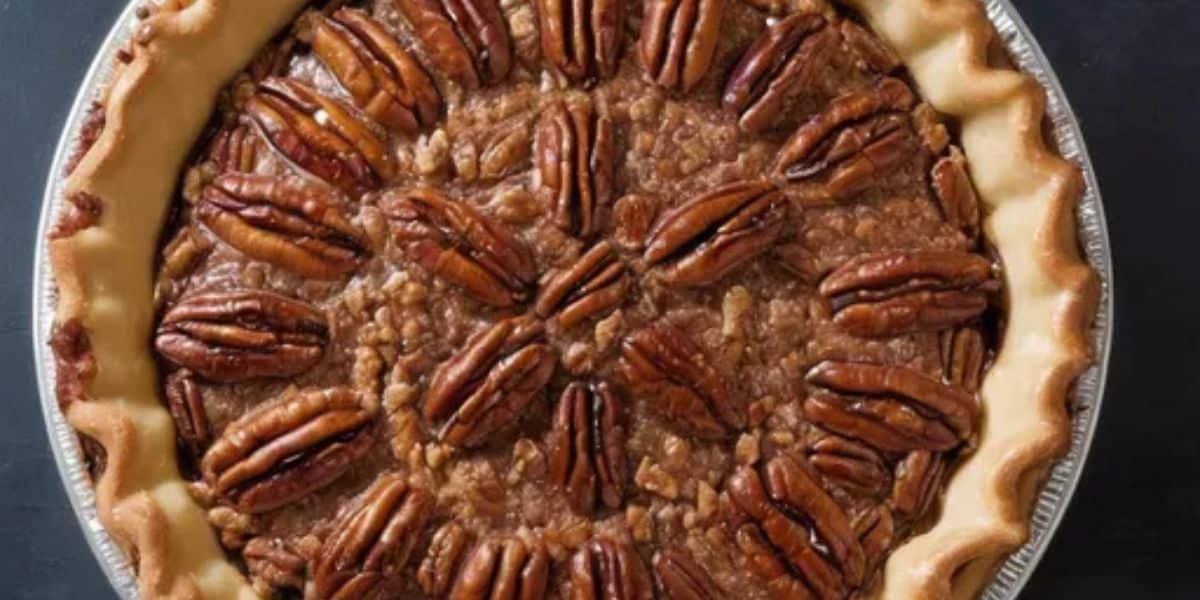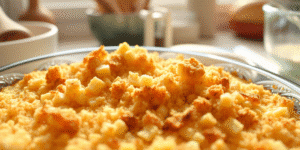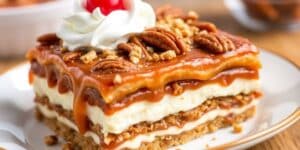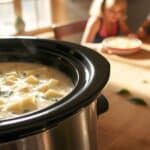Ever wonder what makes a Caramel Pecan Delight Pie truly exceptional? Well, buckle up, buttercup, because we’re about to embark on a culinary journey. This isn’t just about following a recipe; it’s about understanding the art and science behind this beloved dessert.
The Allure of Caramel Pecan
Caramel and pecans, like, come on, is there a more iconic duo? The buttery sweetness of caramel perfectly complements the nutty crunch of pecans. This pie, my friends, is a celebration of that harmonious marriage.
A History of Sweetness
Pecan pie, in general, has roots deep in the American South. It’s believed to have originated in the late 19th century, coinciding with the rise of commercial pecan cultivation. Caramel, on the other hand, has a much longer history, dating back to the early days of candy making. Combining these two elements? Pure genius, I tell ya.
Mastering the Crust
Let’s be real, a soggy bottom can ruin even the most glorious filling. So, let’s chat about the crust.
The Perfect Pastry
A flaky, tender crust is essential. Use cold butter, like, really cold. And don’t overwork the dough! Overworking develops the gluten, which leads to a tough crust. Nobody wants that.
Blind Baking: Your Secret Weapon
Blind baking is a technique where you bake the crust partially or fully before adding the filling. This prevents the dreaded soggy bottom. Line the crust with parchment paper, fill it with pie weights (or dried beans), and bake until lightly golden.
Crafting the Caramel
Ah, caramel. That luscious, golden elixir. But making it can be a little intimidating. Don’t sweat it, though.
The Science of Sugar
Caramelization is the process of heating sugar until it undergoes a series of chemical reactions, resulting in the characteristic flavor and color. It’s all about controlling the heat and being patient.
Wet vs. Dry Caramel
There are two main methods for making caramel: wet and dry. The wet method involves dissolving sugar in water before heating, which helps to prevent crystallization. The dry method involves heating sugar directly in a pan. Both work, but the wet method is often considered easier for beginners.
Achieving the Perfect Consistency
The consistency of your caramel is crucial. You want it to be thick and gooey, but not too hard. Use a candy thermometer to monitor the temperature. Aim for around 245°F (118°C) for a soft-ball stage caramel.
The Pecan Factor
Pecans, those delightful little nuts, bring a wonderful texture and flavor to the pie. But not all pecans are created equal.
Choosing the Right Pecans
Fresh, high-quality pecans are key. Look for pecans that are plump and uniform in color. Avoid pecans that are shriveled or have a musty smell.
Toasting for Enhanced Flavor
Toasting pecans before adding them to the pie enhances their flavor and aroma. Spread the pecans on a baking sheet and bake at 350°F (175°C) for about 5-7 minutes, or until fragrant.
Assembling the Masterpiece
Now for the fun part: putting it all together.
Layering the Goodness
Pour the caramel over the blind-baked crust. Arrange the toasted pecans evenly over the caramel. Bake until the filling is set and the crust is golden brown.
Temperature Control is Key
Baking time and temperature are crucial for achieving the perfect texture. Bake the pie at 350°F (175°C) for about 45-55 minutes, or until the filling is set but still slightly jiggly in the center.
Variations and Twists
Want to get creative? Here are some ideas.
Chocolate Caramel Pecan
Add a layer of melted chocolate to the bottom of the crust before adding the caramel. This adds a decadent chocolatey twist.
Bourbon Pecan
Stir a tablespoon or two of bourbon into the caramel for a boozy kick.
Salted Caramel Pecan
Sprinkle a pinch of sea salt over the caramel before adding the pecans. The salt enhances the sweetness and adds a delightful contrast.
Troubleshooting Common Issues
Things don’t always go as planned, do they? Here are some common problems and how to fix them.
Soggy Crust
Make sure to blind bake the crust properly. You can also brush the bottom of the crust with melted chocolate or egg white to create a moisture barrier.
Runny Filling
Make sure to cook the caramel to the correct temperature. You can also add a tablespoon of cornstarch to the filling to help thicken it.
Burnt Pecans
Keep a close eye on the pecans while they’re toasting. If they start to burn, remove them from the oven immediately.
Serving and Storage
The final touches matter.
The Perfect Presentation
Let the pie cool completely before slicing and serving. You can garnish it with whipped cream, a drizzle of caramel, or a sprinkle of chopped pecans.
Storage Tips
Store leftover pie in the refrigerator for up to 3 days. Cover it tightly to prevent it from drying out.
Expert Insights and Tips
Alright, let’s get into some insider secrets that’ll elevate your pie game.
The Importance of Quality Ingredients
Using high-quality ingredients makes a world of difference. Splurge on good butter, fresh pecans, and pure vanilla extract. You won’t regret it.
Don’t Rush the Process
Patience is key when making caramel and baking the pie. Don’t rush the process. Allow the caramel to cook slowly and evenly, and bake the pie until it’s perfectly set.
Experiment with Flavors
Don’t be afraid to experiment with different flavors and ingredients. Try adding a pinch of cinnamon or nutmeg to the filling, or using different types of nuts, such as walnuts or almonds.
Emerging Trends in Pie Making
Pie making is constantly evolving. Here are some trends to watch out for.
Vegan and Gluten-Free Options
With the rise of vegan and gluten-free diets, there’s a growing demand for pie recipes that cater to these dietary needs. Experiment with vegan butter substitutes, gluten-free flour blends, and alternative sweeteners.
Savory Pies
Pies aren’t just for dessert anymore. Savory pies, filled with meats, vegetables, and cheeses, are becoming increasingly popular.
Mini Pies
Mini pies are perfect for parties and individual servings. They’re also a great way to try out different flavor combinations without committing to a whole pie.
Common Questions Answered
Let’s tackle some frequently asked questions.
Can I freeze Caramel Pecan Delight Pie?
Yes, you can freeze Caramel Pecan Delight Pie. Wrap it tightly in plastic wrap and aluminum foil, and store it in the freezer for up to 2 months. Thaw it in the refrigerator overnight before serving.
How do I prevent the crust from shrinking?
To prevent the crust from shrinking, make sure to chill the dough thoroughly before baking. You can also use pie weights to help hold the crust in place.
Can I use store-bought pie crust?
Yes, you can use store-bought pie crust if you’re short on time. However, homemade crust is always better.
Conclusion: Your Path to Pie Perfection
So, there you have it. A deep dive into the world of Caramel Pecan Delight Pie. With a little knowledge, patience, and practice, you can create a pie that’s truly unforgettable. Now go forth and bake! You got this!

Emily Rose Johnson is a talented writer known for her captivating storytelling and evocative prose, creating unforgettable characters and compelling narratives in various genres.









